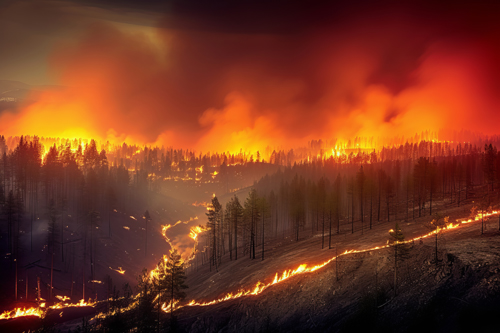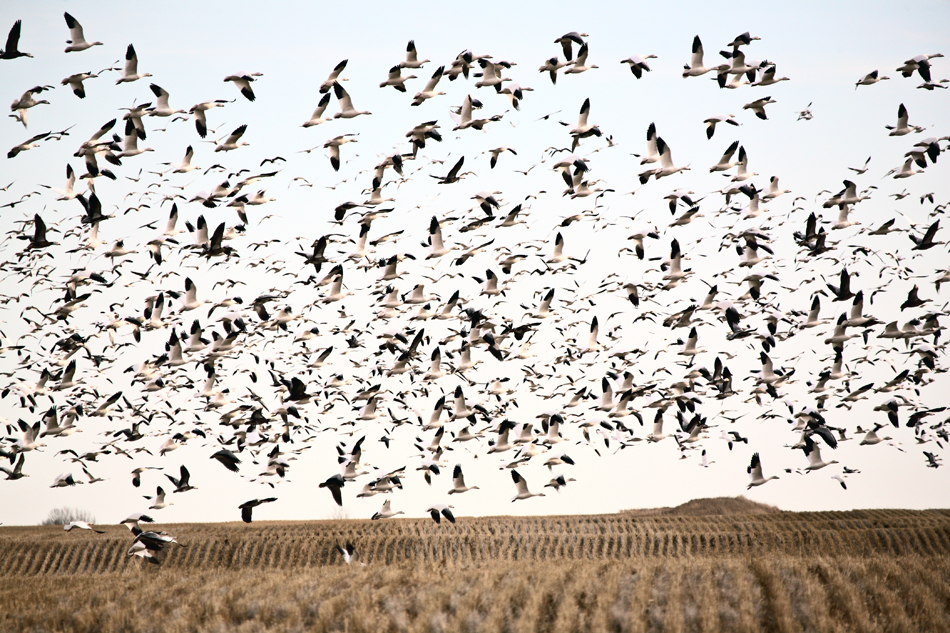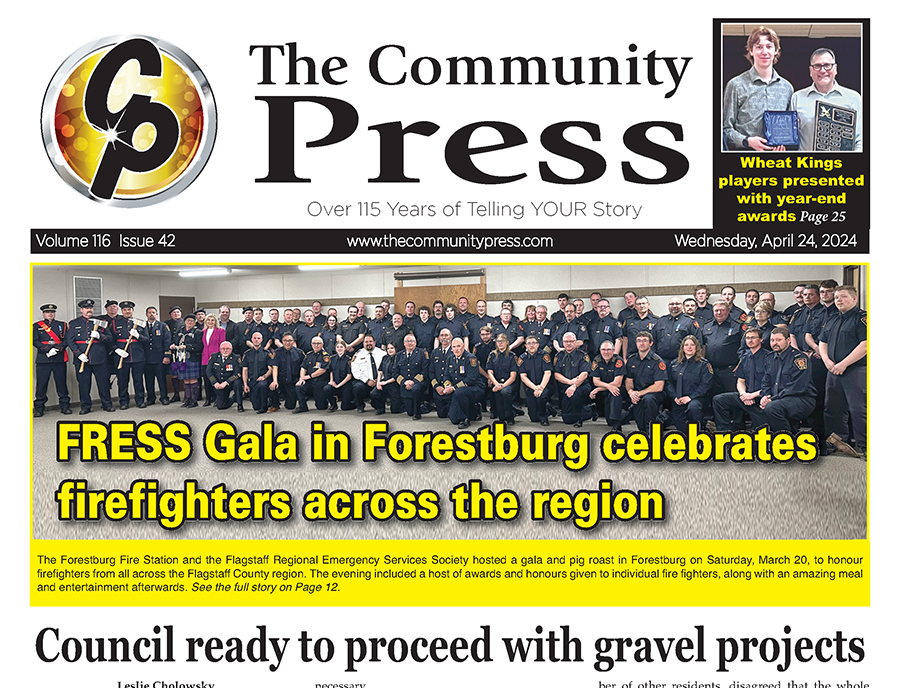Hanna council hears ten per cent water reduction may ease drought
Stu Salkeld
Local Journalism Initiative Reporter
Hanna town council heard the provincial government is not only warning strongly about the possibility of drought this coming summer, but that communities are being asked to plan for a 10 per cent reduction in their normal water usage.
The report was heard at the Feb. 27 council information meeting, which isn’t a regular meeting and doesn’t feature any resolutions.
Councillors heard a presentation from two Alberta Environment (AE) experts, Todd Assen and Roger Ramcharita; the presentation was begun with facts from the very dry past couple of years. Assen stated drought in the summer of 2024 is, “…very likely going to occur.”
Assen noted AE has been examining basins and some are already showing critical water shortage.
He noted the Red Deer River at Drumheller, not far from Hanna, is at its ninth lowest flow level.
Assen stated reservoir levels across Alberta are low, as that water was used to offset the effects of drought last summer.
He said current reservoir levels are much lower than usual, citing as an example Pine Coulee Reservoir, which is currently sitting at 28 per cent, while normally at this time of year it would be between 74 and 91 per cent. Essentially, he pointed out water reserves were used up last year and offer little help in 2024.
There are suspicions the spring melt may not be as much help as hoped either; Assen pointed out snowpack across the eastern slopes of the Rocky Mountains is “below to well below” the normal range.
Another complication noted Assen is that Alberta is currently experiencing an El Nino weather phenomenon, which causes less precipitation and warmer temperatures; he observed that without significant precipitation it’s expected spring moisture levels will be dire.
It was further noted peak moisture tends to be between April and June, so at that time the actual situation should be clear.
More bad news was included in the observation that experts suspect drought will contribute to a serious wildfire problem.
However, there was some positive news. Assen stated the provincial government is proposing voluntary water sharing agreements that in essence propose if everyone uses less water this summer, there will be enough water for all.
Assen noted these agreements will be flexible and based on basin conditions; it’s expected they’ll be released in April or May.
It was noted the provincial government has been discussing the drought threat for months with stakeholders and is planning a major media campaign for public awareness.
Assen noted the provincial government, looking at the possibility of a serious 2024 drought, expects all Albertans to conserve water and noted the Water Act contains some regulatory tools but hoped such an approach wouldn’t be necessary.
Mayor Danny Povaschuk asked what level the Dixon Dam is at. Assen responded it’s currently at the exact same level it was at this time last year, and it did fill up in 2023.
Town Chief Administrative Officer (CAO) Kim Neill pointed out the municipality usually gets a water allocation of 300,000 cubes per year from the water commission, with town staff confirming Hanna rarely uses all of it.
Neill stated water conservation could be embraced while the effects may not be noticeable. However, Neill stated Hanna wants to be a good neighbour and asked if AE had suggestions for what services should be affected by conservation.
Assen responded that’s up to the town, but noted large cities under water restrictions may get annoyed to see smaller places that don’t appear to be using less water.
Assen mentioned several times that water conservation efforts should include a 10 per cent reduction in consumption.
Neill responded a 10 per cent reduction shouldn’t be a major problem for the Town of Hanna.
Stu Salkeld
Local Journalism Initiative Reporter
East Central Alberta Review





